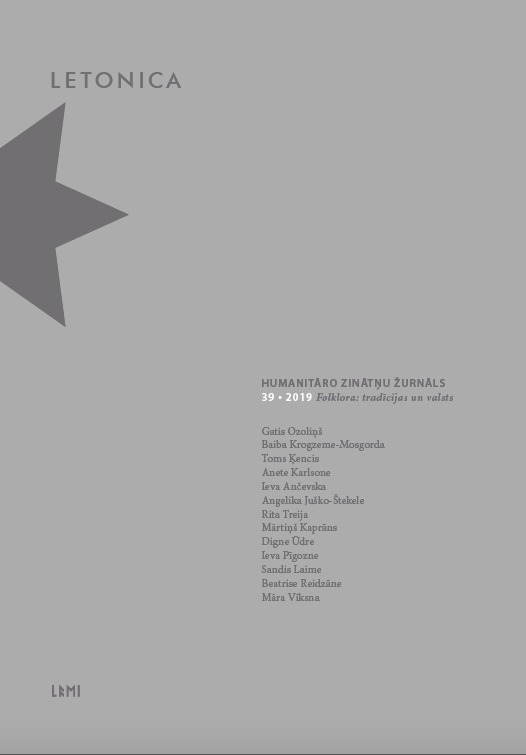Baltā galdauta svētku sākotne
The Beginnings of the White Tablecloth Festival
Author(s): Rita GrīnvaldeSubject(s): Anthropology, Semiotics / Semiology, Customs / Folklore, Social history, Culture and social structure , Present Times (2010 - today), Politics of History/Memory, Politics and Identity
Published by: Latvijas Universitātes Literatūras, folkloras un mākslas institūts
Keywords: White Tablecloth Festival (“Baltā galdauta svētki”); Day of the Restoration of Independence of the Republic of Latvia; traditions; cultural memory; cultural politics; patriotism;
Summary/Abstract: The article explores a new tradition, the White Tablecloth Festival (“Baltā galdauta svētki”), in its early development phase. It was introduced at the national level by the Ministry of Culture of the Republic of Latvia and its partner organizations as a new and fresh form for celebration of the Day of the Restoration of Independence of the Republic of Latvia on May 4, 1990. It always had a place on the official calendar of holidays, through codified protocols, some ritual activities were carried out in narrow elite circles mainly inside the Parliament building and at the Liberty Monument in Riga; however, the Day was not widely celebrated by the general public in a broad ritualistic way. Launched on May 4, 2016, the White Tablecloth Festival was conceived as one of the large scale Latvia’s centenary (2018) celebration projects. The newly created White Tablecloth Festival tradition is based on a purposeful cultural memory strategy and encompasses objectives of strengthening patriotism and targeted collective memory guiding. Planned, implemented, and monitored by the experts of culture, politics, history, marketing and media, the White Tablecloth Festival tried to be an inclusive, simple, and not strictly regulated novelty. Having the white table setting as a unifying element and symbol of self-confidence and pride in the centre of the new tradition, other activities were proposed and demonstrated to people in Latvia and beyond. These included being together and sharing memories, singing together, enlivening old culinary heritage, documenting the holiday, and sharing photos on social media. People were invited to celebrate both in public spaces and in family settings. The first four years of the White Tablecloth Festival demonstrate fluctuating dynamics in its celebration and precautious attitudes. Likewise, the audience reception of this tradition is also rather divisive. The controversial opinions have been shared mainly on social media. The arguments in favour of the Festival are: clarity of celebration form, sense of community, inclusiveness of everyone, the opportunity to celebrate with dignity and style. The main argument expressed against the new calendric practice is the danger of deprivation of the national history narrative along with substituting it with entertainment and consuming activities. *Baltā galdauta svētki ir viens no Latvijas valsts simtgades svinību (2018) projektiem. Tā ir valsts līmeņa jaunrade, mēģinājums rast nebijušu veidolu 4. maija – Latvijas Republikas Neatkarības atjaunošanas dienas – atzīmēšanai. Kultūras pētniekam dzīvot laikā, kad tiek radītas jaunas tradīcijas, ir liela veiksme. Ir dota iespēja reizē būt gan Baltā galdauta svētku tapšanas aculieciniekam – vienam no sabiedrības, gan svētku rašanās brīdī analizēt to kultūrpolitisko un etnogrāfisko pamatu. Šā pētījuma mērķis ir saprast jaunās tradīcijas “anatomiju”. Rakstā analizēta Baltā galdauta svētku cilme, nozīme, etnogrāfiskās izpausmes un recepcija.
Journal: Letonica
- Issue Year: 2019
- Issue No: 39
- Page Range: 109-135
- Page Count: 27
- Language: Latvian

